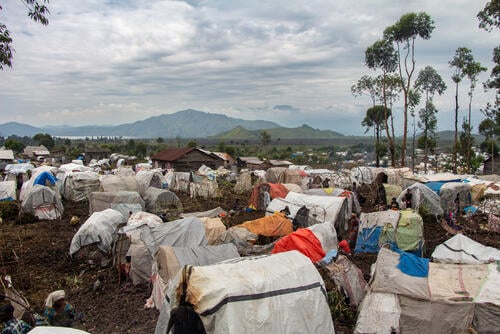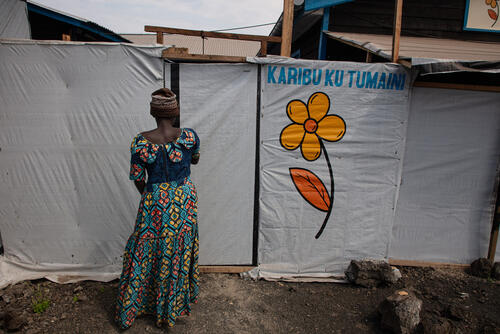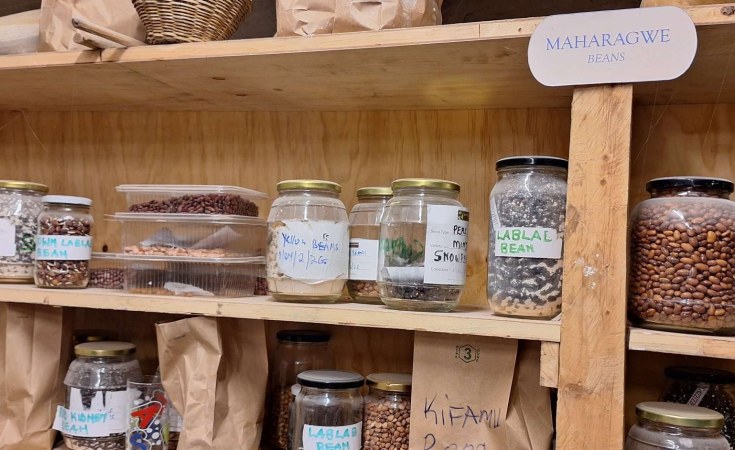'It is overwhelmingly women, frankly, black women': The low-paid NHS staff who missed out on COVID bonus
Sky News surveyed outsourcing companies which employ cleaners, porters and caterers within the NHS and found while some have paid their staff the £1,600 award, others haven't. Unions and protesters say it has been "overwhelmingly women, frankly, black women" who missed out.
Jason Farrell
Home editor @JasonFarrellSky
SKY NEWS
Monday 30 September 2024 03:01, UK

Generally, it is lower-paid staff who have missed out, and campaigners say a high proportion are female and from ethnic minorities.
Sky News has surveyed outsourcing companies which employ cleaners, porters and caterers within the NHS and found while some have paid their staff the £1,600 award, others haven't.
Much depends on what kind of contract the worker is under as to whether the company was able to claim money off the Department of Health. Unions say this is symptomatic of how staff in hospitals are losing their rights.
Dima Hooper, 57, is a member of the catering staff at Homerton Hospital in east London, employed by outsourcing company ISS.
In 2021, she nearly died from COVID and ended up on a ventilator in intensive care at the Royal Free Hospital in north London where Sky News filmed her recovery.

Dima who has been left with long COVID says she "definitely" contracted the illness at work, and it is unfair that she hasn't been paid the bonus.
She said: "A lot of us risked our lives during that time, working six days a week, 12 hours a day through that period.
"Some people lost their lives. Some people can't work anymore. I just think it's not fair because we (were) all there at the same time, doing the work."

Hospitals were the trenches of the COVID battle and anyone who witnessed it would remember the caterers delivering food to wards, the cleaners rubbing every surface armed with antiseptic spray, and the porters keeping spirits up, but also taking the dead to the hospital morgue.
It is these staff, who are often on non-NHS contacts, who are therefore excluded from the bonus.
Some of Dima's fellow caterers at Homerton did get the bonus, if their contract dated back before catering was outsourced, and they remained on what is called an "Agenda for Change" contract.
ISS say their staff "typically" don't qualify, and it's the same for many other big companies in this market.
Outside Homerton Hospital, we spoke to a group of campaigners calling for the work to be taken back in-house, with a petition signed by over 500 staff members at the hospital, outraged their colleagues didn't get the bonus.

Retired Union worker George Binette said: "It is overwhelmingly women and overwhelmingly, frankly, black women who have not received this bonus, despite the fact that they were facing many of the same risks in terms of contracting the virus during the course of the pandemic."
Occupational therapist Diana Swingler, who got the bonus, added: "They are a crucial part of the team. We are all one team, and that's why it's all the more shocking that they're being treated differently and unequally."
ISS told Sky News: "Typically ISS employees are outside the scope of government NHS benefits, however, eligible employees at Homerton University Hospital have received a non-consolidated payment in line with additional funding and criteria from the government.
"We value the contribution of every ISS team member and remain in discussions with relevant parties to extend this to all ISS employees working alongside the NHS."

We approached other companies in this field. Serco which supports 18 hospitals with porters, cleaners and caterers says it has paid staff "where appropriate funding has been provided".
Another big player in hospital catering Aramark UK has "not received any government funding to pay bonuses" to their NHS employees.
Yet, all 1,675 Essentia staff working at Guys and St Thomas's NHS Foundation Trust got the bonus because they are "part of the trust workforce".
G4S said it would not comment.
Mitie, which works with over 40 NHS Trusts, told us: "We have always argued strongly on behalf of our colleagues for parity of treatment with their NHS peers and we're pleased that funding was confirmed for this payment earlier this year."
The GMB Union says this only happened after 97% of GMB members at St George's Hospital, south London, backed action in an indicative strike ballot.
It all adds up to a confusing hotchpotch, where it seems a lot depends on what kind of contact staff members have and how closely linked it is to the NHS "Agenda For Change" pay deal for those directly employed by the NHS.
Rachel Harrison from the GMB Union believes "tens of thousands if not hundreds of thousands of workers", have not got the bonus.
She added: "Ultimately, it is down to the extent of privatisation across the NHS and that is why we are urging the new Labour government to honour their pledge and get everybody back in-house and back on NHS contacts."
 :
:The Department of Health and Social Care says it provided funding for over 27,000 staff in non-NHS organisations to receive the bonus, but it's clear that thousands still didn't qualify under the terms of their contracts.
A DHSC spokesperson said: "Independent organisations providing NHS services are responsible for their own terms and conditions of employment, including pay scales and any non-consolidated pay awards they choose to make.
"Non-NHS organisations were able to apply to be reimbursed for the non-consolidated payments to eligible staff after the department stepped in to provide funding to help deliver them."
Outside Homerton Hospital, caterer Sandra McCarthy, who didn't get the bonus, summed up the feeling.

Describing the weeks that people came on to their doorsteps to clap for NHS workers, she said "It's like people clapped for the others and left us out."
U$A
Amy Maxmen - KFF Health News (TNS)
Sep 30, 2024
One evening in May, nursing assistant Debra Ragoonanan’s vision blurred during her shift at a state-run Massachusetts veterans home. As her head spun, she said, she called her husband. He picked her up and drove her to the emergency room, where she was diagnosed with a brain aneurysm.
It was the latest in a drumbeat of health issues that she traces to the first months of 2020, when dozens of veterans died at the Soldiers’ Home in Holyoke, in one of the country’s deadliest COVID-19 outbreaks at a long-term nursing facility. Ragoonanan has worked at the home for nearly 30 years. Now, she said, the sights, sounds, and smells there trigger her trauma. Among her ailments, she lists panic attacks, brain fog, and other symptoms of post-traumatic stress disorder, a condition linked to aneurysms and strokes.
Scrutiny of the outbreak prompted the state to change the facility’s name to the Massachusetts Veterans Home at Holyoke, replace its leadership, sponsor a $480 million renovation of the premises, and agree to a $56 million settlement for veterans and families. But the front-line caregivers have received little relief as they grapple with the outbreak’s toll.
“I am retraumatized all the time,” Ragoonanan said, sitting on her back porch before her evening shift. “How am I supposed to move forward?”
COVID killed more than 3,600 U.S. health care workers in the first year of the pandemic. It left many more with physical and mental illnesses — and a gutting sense of abandonment.
What workers experienced has been detailed in state investigations, surveys of nurses, and published studies. These found that many health care workers weren’t given masks in 2020. Many got COVID and worked while sick. More than a dozen lawsuits filed on behalf of residents or workers at nursing facilities detail such experiences. And others allege that accommodations weren’t made for workers facing depression and PTSD triggered by their pandemic duties. Some of the lawsuits have been dismissed, and others are pending.
Health care workers and unions reported risky conditions to state and federal agencies. But the federal Occupational Safety and Health Administration had fewer inspectors in 2020 to investigate complaints than at any point in a half-century. It investigated only about 1 in 5 COVID-related complaints that were filed officially, and just 4% of more than 16,000 informal reports made by phone or email.
Nursing assistants, health aides, and other lower-wage health care workers were particularly vulnerable during outbreaks, and many remain burdened now. About 80% of lower-wage workers who provide long-term care are women, and these workers are more likely to be immigrants, to be people of color, and to live in poverty than doctors or nurses.
Some of these factors increased a person’s COVID risk. They also help explain why these workers had limited power to avoid or protest hazardous conditions, said Eric Frumin, formerly the safety and health director for the Strategic Organizing Center, a coalition of labor unions.
He also cited decreasing membership in unions, which negotiate for higher wages and safer workplaces. One-third of the U.S. labor force was unionized in the 1950s, but the level has fallen to 10% in recent years.
Like essential workers in meatpacking plants and warehouses, nursing assistants were at risk because of their status, Frumin said: “The powerlessness of workers in this country condemns them to be treated as disposable.”
In interviews, essential workers in various industries told KFF Health News they felt duped by a system that asked them to risk their lives in the nation’s moment of need but that now offers little assistance for harm incurred in the line of duty.
“The state doesn’t care. The justice system doesn’t care. Nobody cares,” Ragoonanan said. “All of us have to go right back to work where this started, so that’s a double whammy.”
‘A war zone’
The plight of health care workers is a problem for the United States as the population ages and the threat of future pandemics looms. Surgeon General Vivek Murthy called their burnout “an urgent public health issue” leading to diminished care for patients. That’s on top of a predicted shortage of more than 3.2 million lower-wage health care workers by 2026, according to the Mercer consulting firm.
The veterans home in Holyoke illustrates how labor conditions can jeopardize the health of employees. The facility is not unique, but its situation has been vividly described in a state investigative report and in a report from a joint oversight committee of the Massachusetts Legislature.
The Soldiers’ Home made headlines in March 2020 when The Boston Globe got a tip about refrigerator trucks packed with the bodies of dead veterans outside the facility. About 80 residents died within a few months.
The state investigation placed blame on the home’s leadership, starting with Superintendent Bennett Walsh. “Mr. Walsh and his team created close to an optimal environment for the spread of COVID-19,” the report said. He resigned under pressure at the end of 2020.
Investigators said that “at least 80 staff members” tested positive for COVID, citing “at least in part” the management’s “failure to provide and require the use of proper protective equipment,” even restricting the use of masks. They included a disciplinary letter sent to one nursing assistant who had donned a mask as he cared for a sick veteran overnight in March. “Your actions are disruptive, extremely inappropriate,” it said.
To avoid hiring more caretakers, the home’s leadership combined infected and uninfected veterans in the same unit, fueling the spread of the virus, the report found. It said veterans didn’t receive sufficient hydration or pain-relief drugs as they approached death, and it included testimonies from employees who described the situation as “total pandemonium,” “a nightmare,” and “a war zone.”
Because his wife was immunocompromised, Walsh didn’t enter the care units during this period, according to his lawyer’s statement in a deposition obtained by KFF Health News. “He never observed the merged unit,” it said.
In contrast, nursing assistants told KFF Health News that they worked overtime, even with COVID, because they were afraid of being fired if they stayed home. “I kept telling my supervisor, ‘I am very, very sick,’” said Sophia Darkowaa, a nursing assistant who said she now suffers from PTSD and symptoms of long COVID. “I had like four people die in my arms while I was sick.”
Nursing assistants recounted how overwhelmed and devasted they felt by the pace of death among veterans whom they had known for years — years of helping them dress, shave, and shower, and of listening to their memories of war.
“They were in pain. They were hollering. They were calling on God for help,” Ragoonanan said. “They were vomiting, their teeth showing. They’re pooping on themselves, pooping on your shoes.”
Nursing assistant Kwesi Ablordeppey said the veterans were like family to him. “One night I put five of them in body bags,” he said. “That will never leave my mind.”
Four years have passed, but he said he still has trouble sleeping and sometimes cries in his bedroom after work. “I wipe the tears away so that my kids don’t know.”
High demands, low autonomy
A third of health care workers reported symptoms of PTSD related to the pandemic, according to surveys between January 2020 and May 2022 covering 24,000 workers worldwide. The disorder predisposes people to dementia and Alzheimer’s. It can lead to substance use and self-harm.
Since COVID began, Laura van Dernoot Lipsky, director of the Trauma Stewardship Institute, has been inundated by emails from health care workers considering suicide. “More than I have ever received in my career,” she said. Their cries for help have not diminished, she said, because trauma often creeps up long after the acute emergency has quieted.
Another factor contributing to these workers’ trauma is “moral injury,” a term first applied to soldiers who experienced intense guilt after carrying out orders that betrayed their values. It became common among health care workers in the pandemic who weren’t given ample resources to provide care.
“Folks who don’t make as much money in health care deal with high job demands and low autonomy at work, both of which make their positions even more stressful,” said Rachel Hoopsick, a public health researcher at the University of Illinois at Urbana-Champaign. “They also have fewer resources to cope with that stress,” she added.
People in lower income brackets have less access to mental health treatment. And health care workers with less education and financial security are less able to take extended time off, to relocate for jobs elsewhere, or to shift careers to avoid retriggering their traumas.
Such memories can feel as intense as the original event. “If there’s not a change in circumstances, it can be really, really, really hard for the brain and nervous system to recalibrate,” van Dernoot Lipsky said. Rather than focusing on self-care alone, she pushes for policies to ensure adequate staffing at health facilities and accommodations for mental health issues.
In 2021, Massachusetts legislators acknowledged the plight of the Soldiers’ Home residents and staff in a joint committee report saying the events would “impact their well-being for many years.”
But only veterans have received compensation. “Their sacrifices for our freedom should never be forgotten or taken for granted,” the state’s veterans services director, Jon Santiago, said at an event announcing a memorial for veterans who died in the Soldiers’ Home outbreak. The state’s $56 million settlement followed a class-action lawsuit brought by about 80 veterans who were sickened by COVID and a roughly equal number of families of veterans who died.
The state’s attorney general also brought criminal charges against Walsh and the home’s former medical director, David Clinton, in connection with their handling of the crisis. The two averted a trial and possible jail time this March by changing their not-guilty pleas, instead acknowledging that the facts of the case were sufficient to warrant a guilty finding.
An attorney representing Walsh and Clinton, Michael Jennings, declined to comment on queries from KFF Health News. He instead referred to legal proceedings in March, in which Jennings argued that “many nursing homes proved inadequate in the nascent days of the pandemic” and that “criminalizing blame will do nothing to prevent further tragedy.”
Nursing assistants sued the home’s leadership, too. The lawsuit alleged that, in addition to their symptoms of long COVID, what the aides witnessed “left them emotionally traumatized, and they continue to suffer from post-traumatic stress disorder.”
The case was dismissed before trial, with courts ruling that the caretakers could have simply left their jobs. “Plaintiff could have resigned his employment at any time,” Judge Mark Mastroianni wrote, referring to Ablordeppey, the nursing assistants’ named representative in the case.
But the choice was never that simple, said Erica Brody, a lawyer who represented the nursing assistants. “What makes this so heartbreaking is that they couldn’t have quit, because they needed this job to provide for their families.”
‘Help us to retire’
Brody didn’t know of any cases in which staff at long-term nursing facilities successfully held their employers accountable for labor conditions in COVID outbreaks that left them with mental and physical ailments. KFF Health News pored through lawsuits and called about a dozen lawyers but could not identify any such cases in which workers prevailed.
A Massachusetts chapter of the Service Employees International Union, SEIU Local 888, is looking outside the justice system for help. It has pushed for a bill — proposed last year by Judith García, a Democratic state representative — to allow workers at the state veterans home in Holyoke, along with its sister facility in Chelsea, to receive their retirement benefits five to 10 years earlier than usual. The bill’s fate will be decided in December.
Retirement benefits for Massachusetts state employees amount to 80% of a person’s salary. Workers qualify at different times, depending on the job. Police officers get theirs at age 55. Nursing assistants qualify once the sum of their time working at a government facility and their age comes to around 100 years. The state stalls the clock if these workers take off more than their allotted days for sickness or vacation.
Several nursing assistants at the Holyoke veterans home exceeded their allotments because of long-lasting COVID symptoms, post-traumatic stress, and, in Ragoonanan’s case, a brain aneurysm. Even five years would make a difference, Ragoonanan said, because, at age 56, she fears her life is being shortened. “Help us to retire,” she said, staring at the slippers covering her swollen feet. “We have bad PTSD. We’re crying, contemplating suicide.”
I got my funeral dress out because the way everybody was dying, I knew I was going to die.
Certain careers are linked with shorter life spans. Similarly, economists have shown that, on average, people with lower incomes in the United States die earlier than those with more. Nearly 60% of long-term care workers are among the bottom earners in the country, paid less than $30,000 — or about $15 per hour — in 2018, according to analyses by the Department of Health and Human Services and KFF, a health policy research, polling, and news organization that includes KFF Health News.
Fair pay was among the solutions listed in the surgeon general’s report on burnout. Another was “hazard compensation during public health emergencies.”
If employers offer disability benefits, that generally entails a pay cut. Nursing assistants at the Holyoke veterans home said it would halve their wages, a loss they couldn’t afford.
“Low-wage workers are in an impossible position, because they’re scraping by with their full salaries,” said John Magner, SEIU Local 888’s legal director.
Despite some public displays of gratitude for health care workers early in the pandemic, essential workers haven’t received the financial support given to veterans or to emergency personnel who risked their lives to save others in the aftermath of 9/11. Talk show host Jon Stewart, for example, has lobbied for this group for over a decade, successfully pushing Congress to compensate them for their sacrifices.
“People need to understand how high the stakes are,” van Dernoot Lipsky said. “It’s so important that society doesn’t put this on individual workers and then walk away.”
Healthbeat is a nonprofit newsroom covering public health published by Civic News Company and KFF Health News. Sign up for its newsletters here.
( KFF Health News is a national newsroom that produces in-depth journalism about health issues and is one of the core operating programs of KFF — the independent source for health policy research, polling and journalism.)
©2024 KFF Health News. Distributed by Tribune Content Agency, LLC.

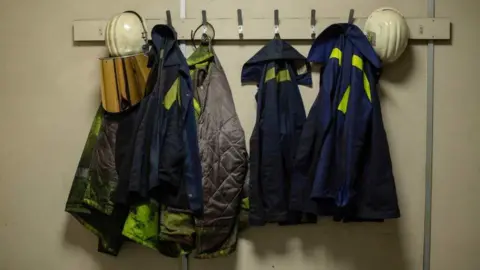

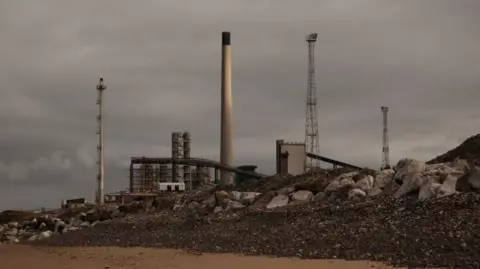
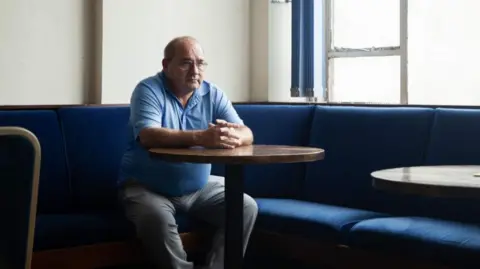
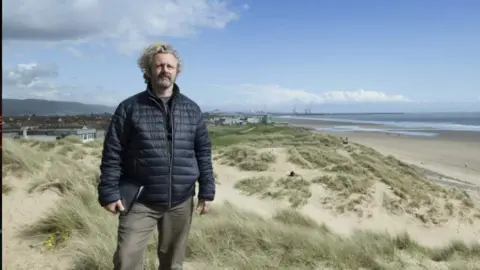
 Britain announced plans to close all its coal-fired power stations by 2025, such as Ferrybridge in northern England. © OLI SCARFF / AFP
Britain announced plans to close all its coal-fired power stations by 2025, such as Ferrybridge in northern England. © OLI SCARFF / AFP

